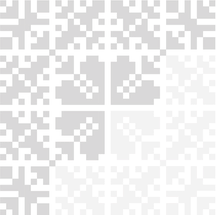C4 M2 L1 Grammar
4 | Modul 2: Gramatika
Što je bilo, bilo je
4 | 2 | Lekcija 1: Kako je bilo?
| Effects of -i ending when preceding -k in feminine nouns
In the Locative case, in the singular form of most feminine nouns whose last consonant is -k, a certain sound change occurs. Look at the following examples.
banka | Rijeka (grad) | Lika (regija) |
Jučer sam bio u banci. | Prošli vikend sam bio u u Rijeci. | Jesi li bio u u Lici? |
The rule is: when -k is followed by -i, the -k has to change to -c (k i = ci).
| Past Tense of the Verb BITI (to be)
In today’s class you encountered the verb biti in the past tense. Generally, the Past Tense consists of two parts:
the unstressed present tense form (the short form) of the auxiliary verb biti (to be) | |
active participle of the verb. |
Thus, in the case of the verb biti in the past tense (for example: I was), you basically use the verb biti twice.
Ja | sam | bio / bila | (I was) |
subject (who) | short form of BITI | active participle of the verb biti |
|
↓ | ↓ | ||
Agrees with the subject of the sentence. | Here you can put any other verb to create its past tense form. |
How to form the active participle?
To form the active participle of a verb, start with the infinitive form of the verb (in this case, the verb BITI), remove the final –TI, and add the required ending to make the gender and number agree with the subject of the sentence.
BITI: BI - TI | ||
gender | singular | plural |
masculine | bi o | bi li |
feminine | bi la | bi le |
plural | bi lo | bi la |
Ja sam bio. | Mi smo bili. |
Ja sam bila. | Mi smo bile. |
Ja sam bila. | Mi smo bili. |
In other words:
1 | If a male person speaks, he would say: Ja sam bio u Zagrebu (I was in Zagreb). |
2 | If a female person speaks, she would say: Ja sam bila u Zagrebu (I was in Zagreb). |
3 | If a male group speaks, they would say: Mi smo bili u Zagrebu (We were in Zagreb). |
4 | If a female group speaks, they would say: Mi smo bile u Zagrebu (We were in Zagreb). |
5 | If there is a mixed group of male and female friends, they would all say: Mi smo bili u Zagrebu (We were in Zagreb). As you see, we use the masculine plural form. |
The neuter gender is used less than the masculine and feminine genders. The neuter is usually used when talking about a child or children.
Dijete je bilo u parku. | Djeca su bila u parku. |
| Past Tense of the verbs ending in -ati (gledati), -iti (posjetiti), -jeti (željeti)
Just as with the verb biti, for verbs that end in -ati or -iti, we need to remove their infinitive ending -ti and add the appropriate form that will reflect the subject of the sentence. For example, in order to express the idea that you watched a movie we need to use the verb gledati in the active participle form, together with the verb to be.
GLEDATI (gleda - ti) | ||
[masculine] | [feminine] | [neuter] |
Ja sam gleda-o. | Ja sam gleda-la. | |
Ti si gleda-o. | Ti si gleda-la. | |
On je gleda-o. | Ona je gleda-la. | Ono je gleda-lo*. |
Mi smo gleda-li. | Mi smo gleda-le. | |
Vi ste gleda-li. | Vi ste gleda-le. | |
Oni su gleda-li. | One su gleda-le. | Ona su gleda-la*. |
* Rarely would we use the personal pronouns for neuter gender. It's more common to use a noun, for example - Dijete je gledalo film.
The same pattern will be used for verbs ending in -iti.
KUPITI (kupi - ti) | ||
[masculine] | [feminine] | [neuter] |
Ja sam kupi-o. | Ja sam kupi-la. | |
Ti si kupi-o. | Ti si kupi-la. | |
On je kupi-o. | Ona je kupi-la. | Ono je kupi-lo*. |
Mi smo kupi-li. | Mi smo kupi-le. | |
Vi ste kupi-li. | Vi ste kupi-le. | |
Oni su kupi-li. | One su kupi-le. | Ona su kupi-la*. |
Verbs ending in -jeti will have the same pattern.
You will remove the final -ti and add a designated ending. Look at the pattern below. However, some additional changes occur for masculine singular form.
ŽELJETI (želje - ti) | ||
[masculine] | [feminine] | [neuter] |
Ja sam žel-io. | Ja sam želje-la. | |
Ti si žel-io. | Ti si želje-la. | |
On je žel-io. | Ona je želje-la. | Ono je želje-lo*. |
Mi smo želje-li. | Mi smo želje-le. | |
Vi ste želje-li. | Vi ste želje-le. | |
Oni su želje-li. | One su želje-le. | Ona su želje-la*. |
As you can see, the only exception in -jeti verbs is in singular masculine form.
Besides the singular masculine form, the entire past tense structure is formed by removing the final -ti part of the infinitive. However, for the masculine singular form, you need to remove -jeti and add ending -io.
Following this pattern, you can create the past tense form of any verb in Croatian. However, at this point we are focusing only on verbs that end in -ati / -iti / -jeti. Other verbs (such as those ending in –ći) are in one way or another a little bit irregular. We will talk about those verbs later on.
4.2 Zadatak 1. Što si radio/radila?
Look at the following infinitive forms.
planinariti | voljeti | gledati | pisati | živjeti |
željeti | plesati | trenirati | plivati | tražiti |
kupiti | slušati | kuhati | trčati | šetati |
4.2 Zadatak 2. Što su radili?
Look at the following sets of pictures. Assume these are all past actions. Write what each person (people) did in the pictures. Be careful about how many people are in the sentence, and what gender form you need to use.
Use pictures (they are NOT in order) so that you can complete the sentences in a logical way. You need to use the past tense of each verb presented in a picture. Read each sentence carefully and pay attention who is performing each activity.
4.2 Zadatak 3. Moje putovanje
Based on the text, answer the questions.
Images used in this document are from these sources.

































